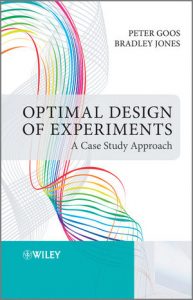This book demonstrates the utility of the computer-aided optimal design approach using real industrial examples. These examples address questions such as the following:
- How can I do screening inexpensively if I have dozens of factors to investigate?
- What can I do if I have day-to-day variability and I can only perform 3 runs a day?
- How can I do RSM cost effectively if I have categorical factors?
- How can I design and analyze experiments when there is a factor that can only be changed a few times over the study?
- How can I include both ingredients in a mixture and processing factors in the same study?
- How can I design an experiment if there are many factor combinations that are impossible to run?
- How can I make sure that a time trend due to warming up of equipment does not affect the conclusions from a study?
- How can I take into account batch information in when designing experiments involving multiple batches?
- How can I add runs to a botched experiment to resolve ambiguities?
While answering these questions the book also shows how to evaluate and compare designs. This allows researchers to make sensible trade-offs between the cost of experimentation and the amount of information they obtain.
After receiving the Ziegel Award, Peter Goos and Bradley Jones were interviewed at the Joint Statistical Meetings in Montreal, Canada. Watch the interview at http://www.statisticsviews.com/details/video/5343191/Optimal-Design-of-Experiments-Peter-Goos-and-Bradley-Jones.html !
The authors discuss the book in much detail in an interview for JMP Analytically Speaking. One of the book chapters is re-enacted in the video below.





